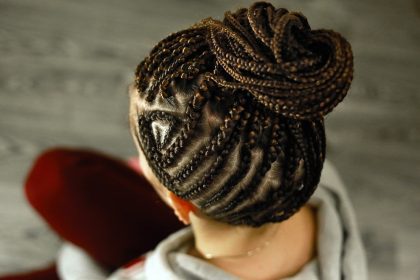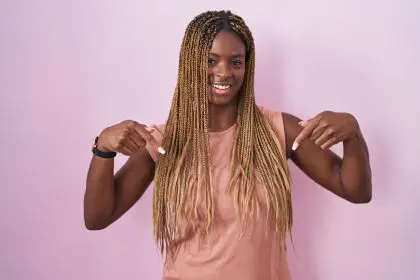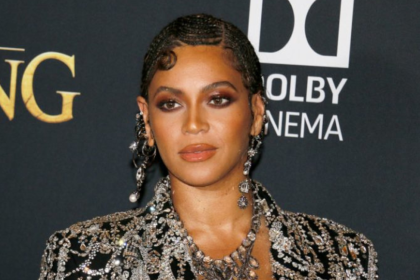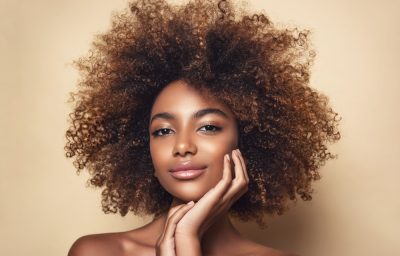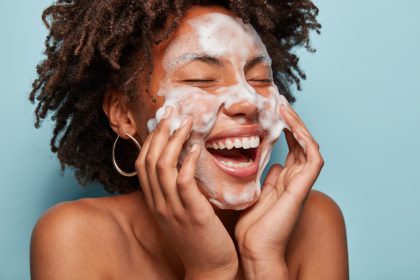The rapidly expanding synthetic hair market has become a multibillion-dollar industry largely targeting Black women seeking affordable protective styling options. However, recent investigations have uncovered alarming health concerns related to chemical composition of these widely used beauty products, raising questions about regulatory oversight and consumer awareness.
As synthetic options continue dominating store shelves and online marketplaces, health advocates warn that the convenience and affordability of these products may come with significant long-term health risks that many users remain unaware of when making purchasing decisions.
Chemical compounds raising red flags
Recent testing has identified carcinogenic compounds in numerous synthetic hair products widely available on the market. These cancer-causing agents present particular concern given the extended wear time of protective styles, which can span weeks or even months, potentially creating prolonged exposure to harmful substances positioned directly against the scalp.
The proximity of these materials to the skin raises additional concerns about dermal absorption of toxic compounds. Unlike cosmetics that might be applied and washed away daily, synthetic hair remains in constant contact with the scalp, potentially allowing for continued exposure to carcinogens through skin contact and inhalation of fibers and dust particles.
Perhaps most concerning among recent findings is the presence of lead in certain synthetic hair products. This neurotoxic heavy metal poses serious health risks, particularly for individuals who install or adjust these hairstyles frequently, potentially increasing their exposure through hand-to-face contact during styling.
Lead exposure presents particular dangers for pregnant women and those planning pregnancy, as the metal can cross the placental barrier and potentially affect fetal development. Even low-level exposure can contribute to developmental delays, cognitive impairments and other neurological issues, making this finding especially troubling for products marketed to women of reproductive age.
Market factors driving popularity despite risks
The widespread adoption of synthetic hair products stems largely from their economic accessibility. With natural hair alternatives often priced significantly higher, synthetic options provide an affordable entry point for protective styling that fits within varying budget constraints, making them particularly appealing to younger consumers and those with limited disposable income.
This price differential creates a troubling dynamic where consumers with fewer financial resources may face disproportionate exposure to potentially harmful chemicals simply because safer alternatives remain financially out of reach. The situation raises important questions about equity in access to safe beauty products across different economic brackets.
Beyond cost considerations, synthetic hair products have gained popularity for their remarkable versatility and ease of maintenance. These materials allow for dramatic style transformations without chemical processing of natural hair, supporting hair health through protective styling while still permitting fashion experimentation.
The low-maintenance nature of many synthetic styles serves practical needs for busy professionals, students and parents seeking time-efficient beauty routines. This convenience factor, combined with an expanding range of textures and colors, has driven market growth despite emerging health concerns, suggesting many consumers may be unknowingly prioritizing convenience over safety.
Health implications requiring attention
Health experts express particular concern about cumulative exposure effects from regular, long-term use of contaminated synthetic hair products. While individual exposures might present minimal risk, repeated use over years could potentially increase health risks through accumulated toxic burden, especially for dedicated users who regularly cycle through different synthetic protective styles.
This pattern of continuous exposure differentiates hair products from occasional-use cosmetics and warrants special consideration when evaluating potential health impacts. Researchers note that current safety regulations rarely account for these cumulative patterns of use specific to the protective styling context.
The current regulatory framework governing synthetic hair products contains significant oversight gaps that allow potentially harmful products to reach consumers without adequate safety testing. Unlike pharmaceuticals or even certain cosmetics, synthetic hair falls into a regulatory gray area with limited pre-market testing requirements or ingredient disclosure mandates.
This regulatory environment places the burden of safety research largely on consumers themselves, many of whom lack access to testing resources or specialized knowledge needed to evaluate chemical composition of products. The situation highlights the need for strengthened oversight and more rigorous safety standards within this product category.
Consumer protection strategies
Amid growing awareness of these concerns, health advocates recommend several protective measures for consumers who use synthetic hair products. Thoroughly washing synthetic hair before installation can help remove some surface contaminants, though this approach cannot eliminate compounds integrated into the fiber material itself.
Limiting wear time of synthetic styles and incorporating regular breaks between installations may reduce cumulative exposure, as can selecting products from manufacturers who voluntarily disclose ingredients and conduct third-party safety testing. Some experts also recommend wearing a protective barrier like a wig cap between synthetic materials and the scalp to minimize direct contact.
Industry responsibility and path forward
Beauty industry stakeholders have an important role to play in addressing these emerging health concerns. Manufacturers can implement more rigorous testing protocols, transition to safer alternative materials, and increase transparency about product composition to help consumers make informed choices.
While premium-priced safer alternatives already exist in the marketplace, expanding access to affordable options made with non-toxic materials represents a critical industry challenge. Consumer advocacy groups emphasize that beauty should not come with hidden health costs, particularly when those costs disproportionately affect specific communities.
As research continues to emerge about chemical exposures from synthetic hair products, the findings underscore the importance of informed consumer choice. The goal remains balancing style versatility and affordability with necessary health protections, ensuring that protective hairstyles truly protect both hair and overall wellbeing.


